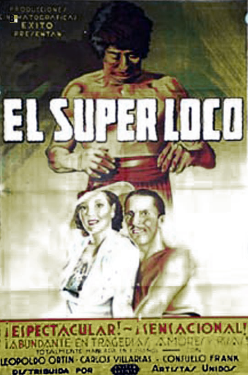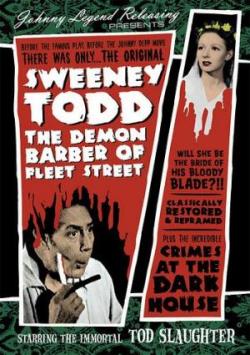I can’t decide what hits me hardest when I watch The Adventures of Robin Hood, the beauty of the film or the sheer joy in it. This is the film where everybody got it right.
Let me start with the colors. Technicolor was new to film in 1938 and for this one film, it was spectacular. Crisp, bright, and dazzling, it wasn’t quite real, but how reality should be. You go to an art museum to see paintings that don’t match the world, yet have a greater connection to it than any exact replica—the same goes for the colors in The Adventures of Robin Hood. The forest is radiant, every leaf gleaming. Castle walls sparkle. Costumes glow. It amazes me that after 66 years, no one has managed to capture that look again.
To accompany the luminous visuals, Erich Wolfgang Korngold wrote a score that stands on its own as symphonic art while managing to merge into the film. The merry men would never have been so merry without Korngold’s lighthearted march. The romance between Robin and Marian, given its brief screen-time, would have lacked emotional depth without Korngold’s idyllic melody. This is one of the great film scores, topped, if at all, only by another Korngold composition.
The story is less complicated than the art direction, but that isn’t a flaw. It’s iconic. The basic tale, in one form or another, has been with humanity since we started telling stories around blazing fires. There is the great hero who doesn’t follow rules, the beautiful maiden to inspire him, friends to stand with him through all things, and the evil that must be defeated. And this version is told with humor, rapid pacing, and exciting swordfights.
Errol Flynn plays the iconic hero, and is one of the reasons why a film like this could never be made now. Flynn is often underrated because he didn’t play in dry, slice-of-life dramas that people like to pretend are important. Any number of actors can slide into those roles but no one could replace Flynn. He wore green tights and a little hat, swung from trees, tossed his head back for bellowing laughs, and made grand speeches, and did it all without looking silly or effeminate. Anyone who can wear that costume and come off as tough has talent. I can’t watch an Errol Flynn film without liking him, and he puts all his charm and masculinity into Robin Hood. The Adventures of Robin Hood, is fun from beginning to end, and much of that comes from Flynn. It isn’t that it looks like Flynn is having a good time, but rather that Robin is having a good time, and that is vital to the movie.
Flynn was backed by a near perfect supporting cast, all of whom were able to let the audience know their character in seconds. With an inflection from Rathbone, we know the vicious nature of Sir Guy. A smile from Rains reveals the megalomania of Prince John where a similar smile from Hale exposes Little John’s rugged but amiable nature. In just over an hour and a half, we know eleven characters well; that’s quite a feat since for most films, we’re lucky to get to know two or three. Granted, they only have a few levels of depth, but they are more than cardboard cutouts, and they are believable in their relative simplicity. Olivia de Havilland is the only one whose portrayal feels forced, but it is sufficient.
Virtuoso director Michael Curtiz pulls all the pieces together. He knew exactly how long to stay with a scene, or a line, to raise the tension or get a laugh. The Adventures of Robin Hood contains his signature swordfight, with the shadows fencing behind Flynn and Rathbone. The scene has been copied many times, even by Curtiz, and much later by George Lucus, but this was the original. The Adventures of Robin Hood is not a perfect picture, but it is close. A day-for-night scene looks like day, an exterior castle shot is obviously an interior set, and the over cranking of the camera for several fight scenes is dated, but any flaws are minor ones.
If you feel the need for a meaningful theme in your films, one can certainly be found. The Adventures of Robin Hood presents a way of life, and does it better than any other film. It suggests that to have a good life, you need to do the right thing, the ethical thing, but not in some holy, righteous manor. Happiness can be found in right action, mixed with wild behavior, a certain amount of anarchy, and a strong questioning of any authority. Robin rarely makes the best choice on how to help others, rather he makes the fun choice. And that allows him, or anyone, to keep helping, which is far more important than doing it all properly once. That’s worthy of Buddha.

 steals the film. Hentzau is suave, witty, and playful. He jokes as he kills. He’s more than happy to run from a fight, but not because he is a coward; he simply sees no reason to stick around. Fairbanks has the charm and sex appeal to pull off the role, and in their climatic battle, it is sometimes hard to root against him.
steals the film. Hentzau is suave, witty, and playful. He jokes as he kills. He’s more than happy to run from a fight, but not because he is a coward; he simply sees no reason to stick around. Fairbanks has the charm and sex appeal to pull off the role, and in their climatic battle, it is sometimes hard to root against him.






